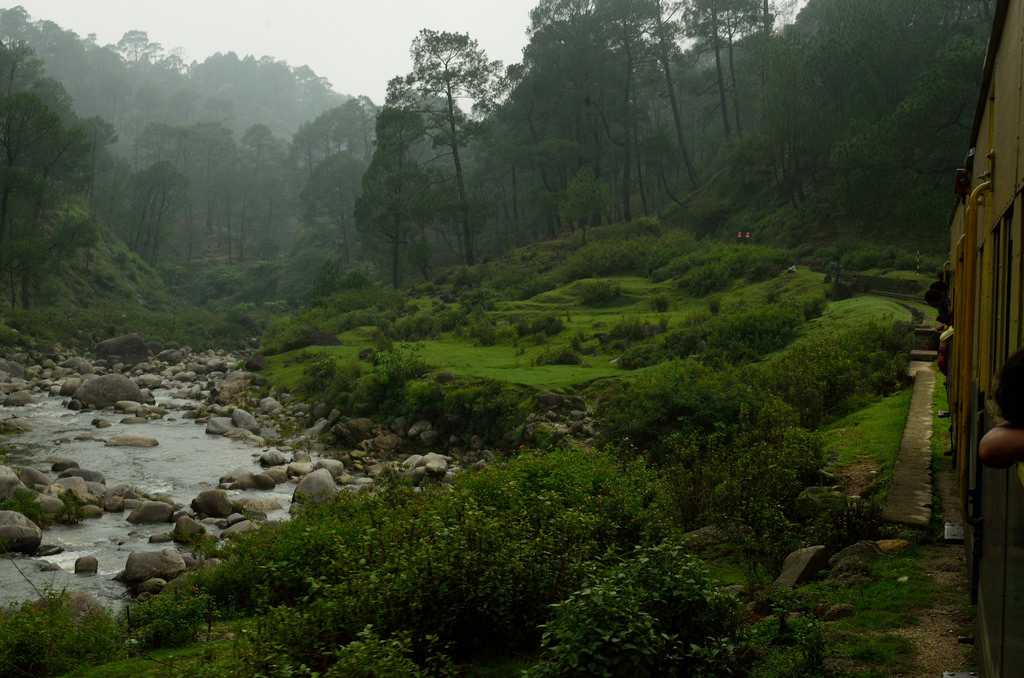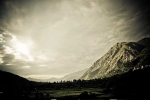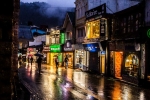"Land of the Gods"
Kangra Tourism
For a spiritual retreat that will awaken inner peace, with a mighty Beas coursing through a lush green valley, Kangra is the place to visit.
The Beas river flowing through Kangra and the repeated mention of the Valley in the holy Hindu texts, present Kangra as 'Devbhumi' or Land of the Gods. Kangra's majestic beauty and the Valley's various panoramic delights have something to offer for people of all ages. While there are enough stay and travel options available, plan your trip in advance keeping the climate of Kangra in mind. Rest assured, you're in for a visual and experiential treat.
Download Kangra PDF Guide >
What's Great?
Easy accessible, as it has its own airport, and is well-connected by roads with the major cities of North India.
What's not so Great?
Gets crowded during the peak season.
For Whom
Kangra is perfect for family trips. Also ideal for trekkers. It can also be visited by people for are looking for peace and serenity, away from the crowded places.
The Dhauladhar Rangers
Kangra valley is known for its pristine beauty of the majestic Dhauladhar ranges that provide this city a mesmerising backdrop with the beauty of refreshing green hills and endless tea plantations. Kangra valley is famous for its tea plantation gardens, in Palampur and areas around which lies 36 km away from Kangra city. Kangra has been a part of the Indian mythological tales and hence it houses a number of the temple.
Jwala Devi temple, most famous of them all are known for its eternal flame, which is burning continuously for years without any known source of fuel. The temple has put the theories of science in question. Masroor cut rock temple, which is a rock temple from the monolithic age and has been mentioned in the holy book of Mahabharat.
Meditation retreats of Kangra
Kangra is a district which encompasses Dharamshala and McleodGanj within its boundaries. Dharamshala and McleodGanj are the well-spoken gems of Kangra and as well as Himachal Pradesh which is famous for their meditation centres all around the world. The reflector of Buddhist culture, the hill town are a famous Tibetan colonies, which have very well preserved the Tibetan culture. Dharamshala is also the home of the Dalai Lama who runs his government in exile from Dharamshala. From the Tibetan monasteries to Tibetan food and souvenirs, McleodGanj and Dharamshala are paradises for the peace and Buddhism seekers.
One Day Itinerary
Day 1-Arrive in Kangra by air or by road in the evening. Check-in at the hotel in Kangra. Overnight stay at the hotel.Day 2-Breakfast at the hotel Visit the most famous attraction of the Kangra- the Kangra fort. The ruins of the majestic fortress are a paradise for history buffs and also offers the panoramic view of the whole Kangra valley Then visit the Jwala Devi temple, famous for its eternal flame that has been burning continuously for thousands of years without any source of fuel. Then visit the Baijnath temple, where nature and human architecture amalgamate perfectly to treat the human eye and stimulate the human mind. Visit the Kangra Art museum, which showcases the Tibetan artefacts. Back to hotel.Day 2-Check-out from the hotel after breakfast.
Head to Dharamshala, visit various places in Dharamshala, such as Tibetan monasteries, Dharamshala cricket stadium and places in McleodGanj.
Restaurants and Local Food in Kangra
The region of Kangra offers a rich gastronomical journey, laden with exotic spices and rich textures. Major dishes include Kalan ke pakode (grass pea fritters), Bhruni (cooked fig leaves in dry gravy), Barah ki chutney (fresh rhododendron pickle), Seera (Sweet soup of ground wheat), Phafru ka sag (buckwheat cooked in its own gravy with onion, garlic and other spices), Lasode ki sabzi (Gunda gravy dish), chhu nali ki bhuji ( water cress cooked in gravy), Kulfa ka sag (pigweed cooked in gravy), aadu sabzi (Gravied peaches) and Nashpati sabzi (gravied pears). Kangra as a district is all about experiencing new and sdifferent pahari cuisine. You can lay off the usual multi cuisined or conventional north Indian dishes for a taste at the various dhabas and smaller restaurants scattered in the city. Your hotel staff could also be gracious enough to whip up a native dish if subject to its seasonal availability.
View 3 Restaurants in Kangra >>
Sep-Junis the best time to visit Kangra
September to June are the best months to visit Kangra. While the summer months of May-June, with a comfortable temperature of 22-30 degrees Celsius, is preferred by trekkers, overall the months of September to November are ideal for sightseeing, all types of outings, and visiting the various temples located in the vicinity of Kangra. January is the month that you can lay off easily because of the intolerably cold temperatures dipping to sub-zero levels.
Weather in Kangra
Loading...
Kangra in Summer (April - June)
The temperature in summer ranges from 22 to 38 degrees Celsius. It is the best time for trekking in the Valley. You can take various treks during this period such as Triund trek, Bhagsunag trek, Indrahar pass trek.
Kangra in Monsoon (July - September)
Kangra receives an average amount of rainfall, which makes the valley purer and greener. Due to rain showers, your sightseeing can be hampered but this can be considered a good time to visit Kangra.
Kangra in Winter (October - February)
The temperature in winters in Kangra can fall as low as 4 degrees Celcius and does not rise above 20 degrees Celcius. In some parts of the Kangra valley, you can witness snowfall in the month of January and February.
Monthly Weather in Kangra
Month
Avg. Minimum (°C)
Avg. Maximum (°C)
January
6
18
February
9
23
March
11
27
April
17
35
May
21
38
June
22
38
July
25
34
August
24
33
September
22
33
October
16
32
November
9
26
December
6
22
Comments on Kangra
Post Your Comment


 Kareri Lake
Kareri Lake Brajeshwari Temple
Brajeshwari Temple Kangra Fort
Kangra Fort Baijnath Temple
Baijnath Temple Mcleodganj
Mcleodganj Dalhousie
Dalhousie Khajjiar
Khajjiar Dharamshala
Dharamshala Manali
Manali Shimla
Shimla